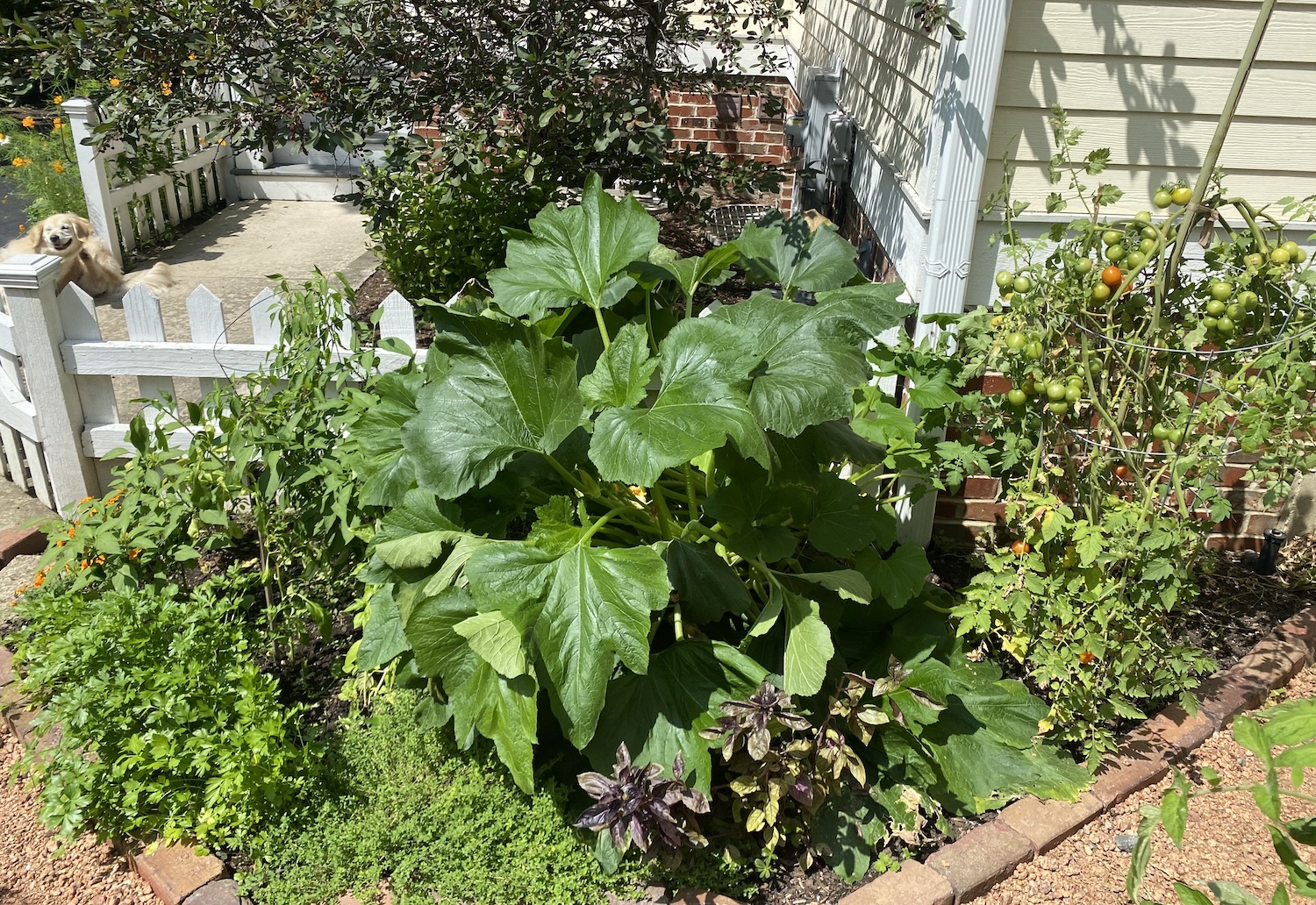
A vegetable garden to feed your soul
Tips on how to get started with your own garden
By Leah Sorini
Every summer, the side yard of my parents’ house teams with peppers, tomatoes, cucumbers, basil, parsley, thyme and oregano, thanks to my dad’s vegetable garden.
“Nothing compares to stepping outside and picking fresh vegetables and herbs for your meal,” says Ron Sorini, my father.
His garden brings me back to childhood: the earthy smell, a pan sizzling as my dad makes a vegetable omelet, the sharp smack of a knife as my mom slices cucumbers for a salad.
For our family, the vegetable garden represents so much more than fresh, chemical-free produce. It’s an extension of our family love that began with my Nonna.
“My favorite memories are helping my mom with her garden,” my dad recalls. “I’ve always loved watching things grow.”
“The first tomato is the most exciting. I can barely get inside before eating it. And I’m selfish. I never share it,” he jokes.
The first tomato is the most exciting. I can barely get inside before eating it. And I’m selfish. I never share it
Besides ensuring a healthier table, growing your own vegetables also benefits our planet by reducing waste and your carbon footprint, since you get your produce without the fossil fuels used in shipping and handling.
All you need is a plot of land or even a pot.
For those of you who haven’t yet tried to grow your own vegetables, my father has some easy advice to help get you started so that you, too, can enjoy the thrill of popping a tomato from vine to mouth.
When it comes to his gardening philosophy, my dad likes to keep everything natural, which is critical to preserving healthy soil. He’s been growing vegetables since 1986 and has not used pesticides or anything artificial for as long as he can remember.
How to get started growing your own vegetables
To prepare, he maps out a plan to prevent over-planting.
A week before he puts seeds and plants into the ground, he adds manure to fertilize the soil and a little fresh dirt. He also aerates the soil to improve drainage and help seedlings grow. Since my mom recently started composting, this year he can use her lush dark compost to enrich the soil.
By the first week of May, he’s ready to plant.
“In April, there is still a risk for a frost,” he warns.
Once the seeds begin to sprout, the next step is to prune the seedlings. My dad starts with the tomatoes. He picks out the shoots, also known as suckers, between stems to stop the plant from becoming too heavy at the top and falling over. This gives fewer spaces for insects to destroy the plant and allows the plant to dry more quickly after a rain, preventing mildew. Many people also stake their tomatoes to prevent the plants from tipping over.
To keep animals away, my dad uses hot pepper spray, which makes the plants too spicy for the animals to enjoy. A small, white fence surrounds his garden to provide extra protection against animals.
By July, he’s outside picking weeds every day.
“Weeds are a never-ending battle. They just keep growing,” he says.
From one year to the next, the garden is never quite the same. When my dad first started, he grew mostly herbs, due to limited space. As his garden has grown, he’s able to try new vegetables each year. He has experimented with squash, pumpkins and radishes but he always includes peppers.
“Peppers are my favorite. There is so much variety.”
In recent years, he’s integrated flowers throughout to increase the aesthetic appeal.
Every garden is different
The conditions for your garden will vary, depending on exactly where you live.
In the city, people often use raised beds because Chicago’s soil can be too toxic to grow food safely.
If you don’t have access to an outdoor plot, you can grow produce inside. Mushrooms, most herbs, avocado, lemons, radishes and scallions grow well inside. If you prefer to grow outside but have limited space, try a community garden.
The rewards of gardening involve so much more than your senses.
Just as my grandmother fed our souls with her food, my dad does with his vegetables. Ensuring our dinners include fresh, local and pesticide-free vegetables is just one way he shows his love for our family.
When I move to Chicago from a suburb later this year, I look forward to finding a little piece of home in a community garden, reaping the lessons from my dad.
For more gardening resources
- Starting a Small Space Vegetable Garden Chicago Botanic Garden
- 15 Plants Perfect for Apartments Chicago Tribune
- Six Things to Plant in the Ideal Starter Garden, Chicago magazine
Resources on native plantings
A video presentation by Doug Tallamy, author of Nature’s Best Hope: A New Approach to Conservation that Starts in Your Yard. (His talk begins at 1.55 min and runs 54 minutes.)
A list of native plant sales in the Chicago region.
Plant sales in Cook, DuPage and Will Counties
Order online, pick up in Maywood or Lemont.
Order online, pick up in Oak Brook.
Order online, pick up in Romeoville.
Thank you to Karen Daiter, chair of the Climate Reality Chicago Metro Trees Team, for her contribution on native plantings

Leah Sorini is a communications professional with experience in writing, project management, strategic planning, community engagement and public speaking. She is involved in the Chicago chapter’s communications work. She’s passionate about raising awareness to encourage action that addresses the climate crisis.


3 Responses
Nice article Leah Extra special reading the article Knowing where the garden is Then being able to taste some of your parents efforts
Thank you so much, Stanley!
Beautiful written. Can’t wait to plant my garden this year.